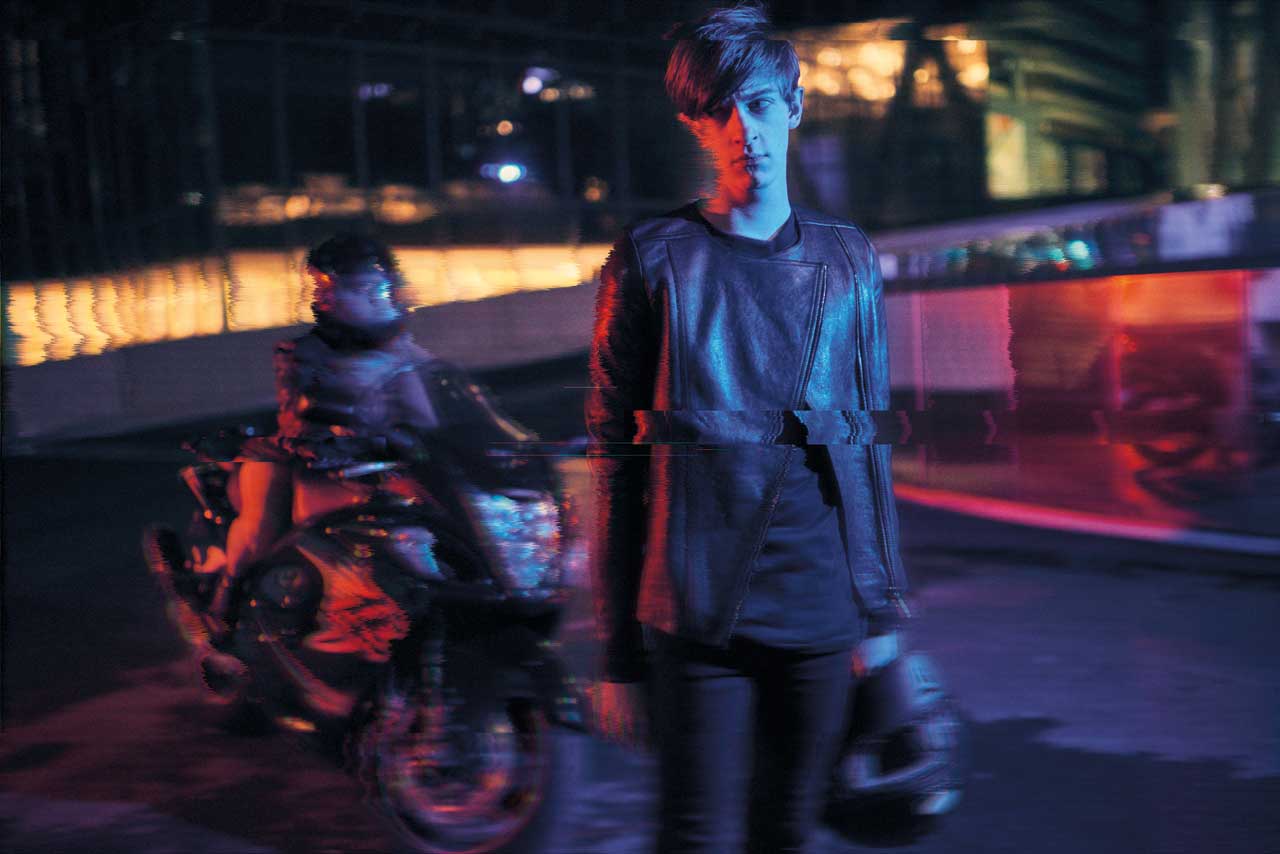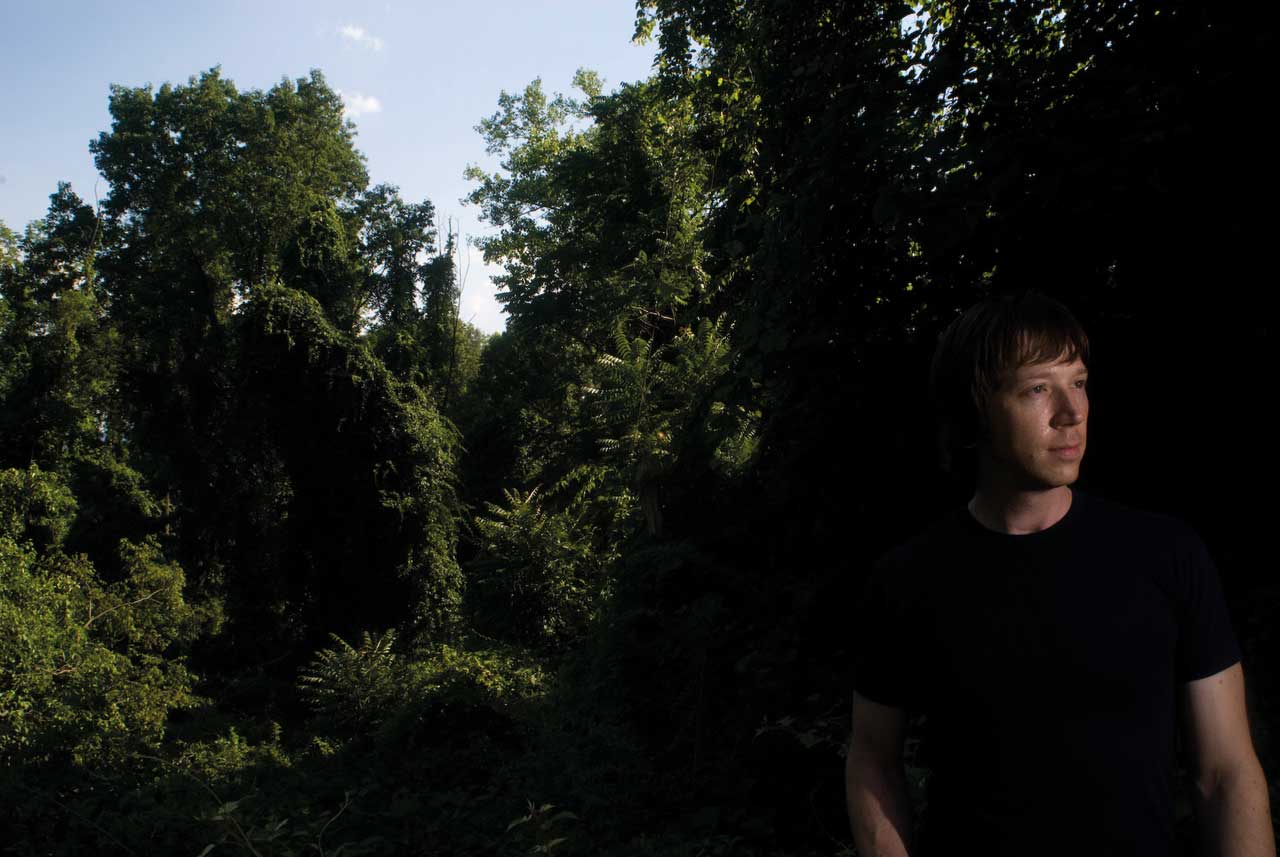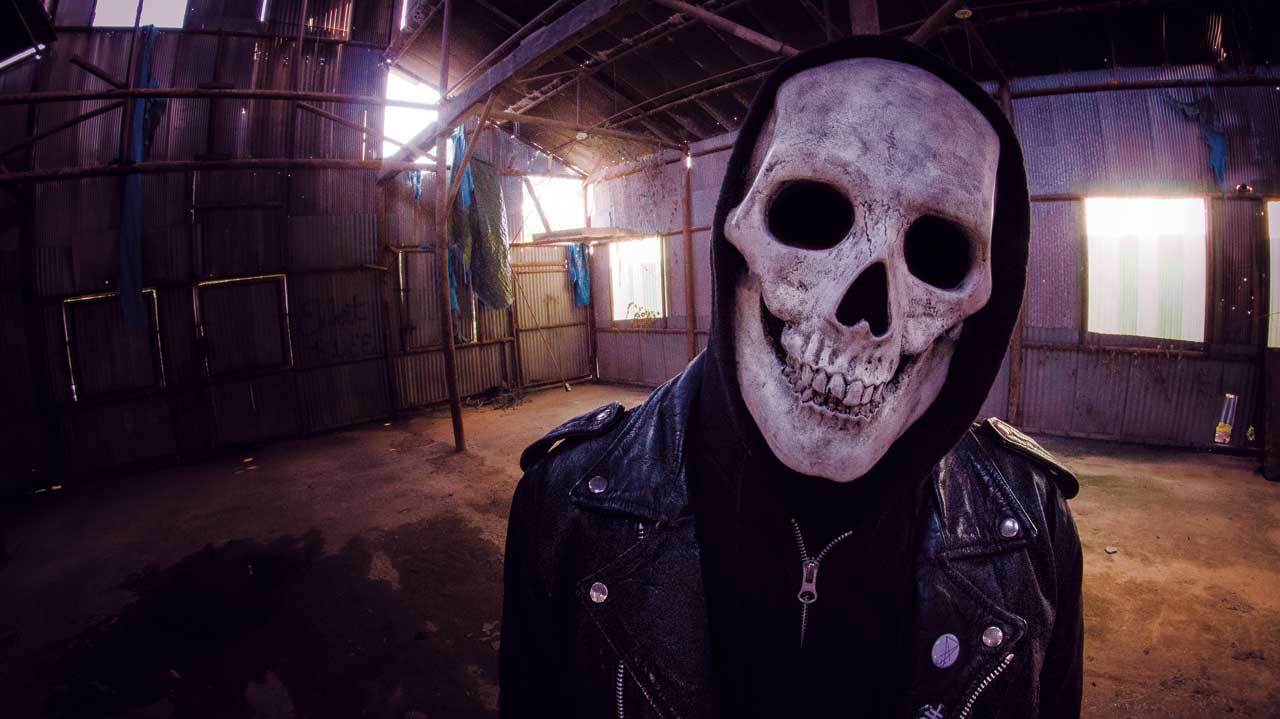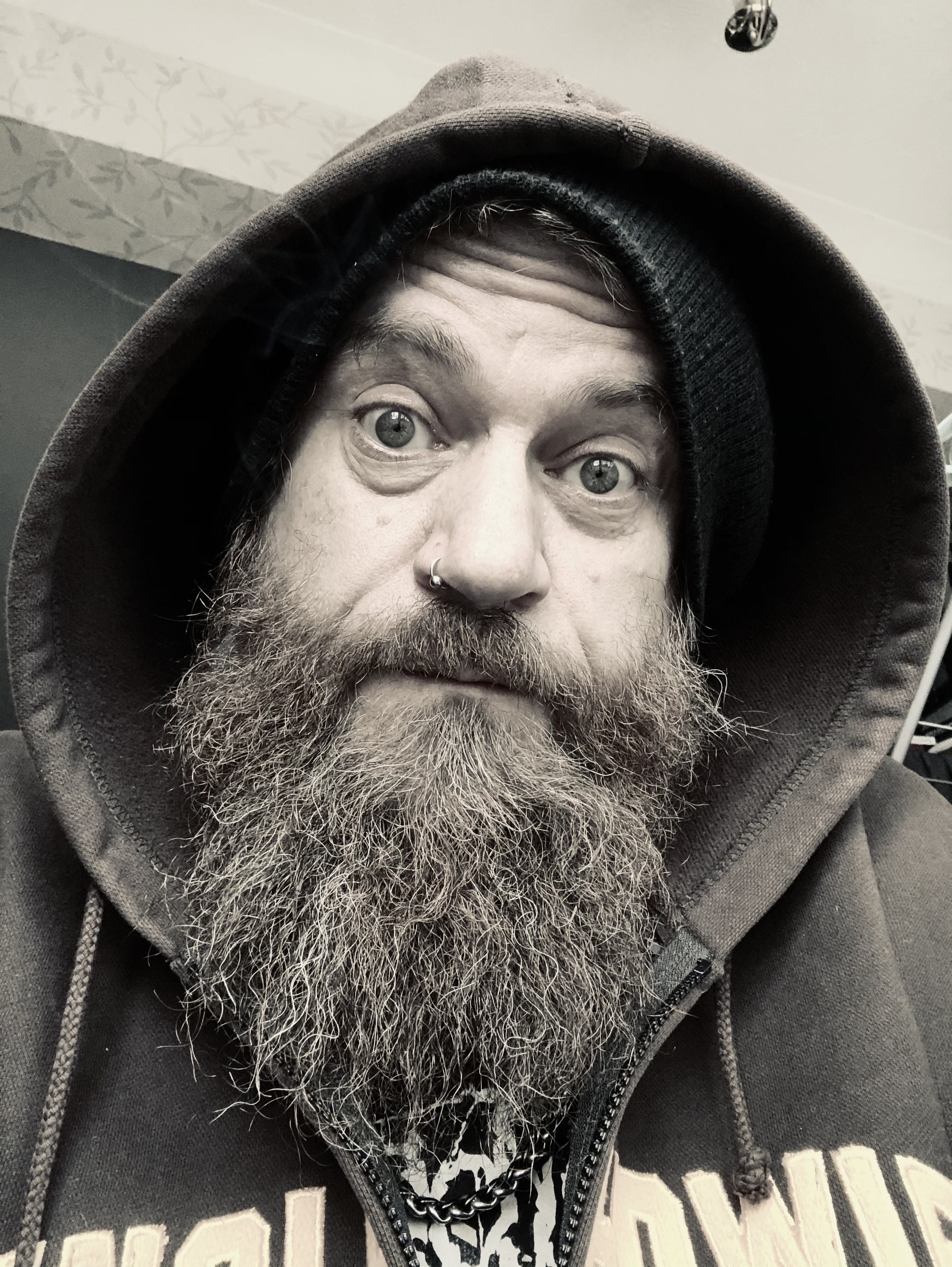Divided societies, repellent right- wing governments, the rise and rise of the super-rich and, of course, the unstoppable forward march of untamed technology… you don’t have to be particularly observant to spot that 2016 was the year that the world appeared to retreat back to the social upheavals and squinting meanness of the 1980s: a decade that somehow showcased both the worst and the best of humanity, and which still seems to exert a magical, nostalgic gravity on music and movie fans of a certain age. For all its excess and ideological selfishness, the 80s plainly had many wonderful attributes too, as filmmakers and musicians channelled their late 20th-century fear, paranoia and alienation through some of the most seminal sounds and visions ever captured.
And if one sound sums up the 80s’ bizarre blend of gleaming opulence and bleak isolation, it’s the sizzling, hissing and twinkling sound of deftly manipulated synthesizers: the iconic bedrock of 70s and 80s horror and sci-fi movies, from Italian cult heroes Goblin’s numerous soundtracks for horror Svengali Dario Argento and John Carpenter’s profoundly unsettling Halloween score to the futuristic wonder of prog legend Vangelis’s ageless Blade Runner soundtrack.
What is slightly harder to understand is precisely why this music – which, for better or worse, is inextricably linked with the world of 30 years ago – is re-emerging today and becoming one of the most pervasive phenomena in modern underground music. Weirdly, perhaps, the triumphant return of music that has long been known by its protagonists and acolytes as ‘synthwave’ is happening primarily in the metal world, rather than in more populist, mainstream, Hollywood-friendly territory. Thanks to the scene’s key figures, most notably likeminded Frenchmen, gig comrades and former metal musicians James ‘Perturbator’ Kent and Franck ‘Carpenter Brut’ Hueso, and the ongoing success of prime 80s TV nostalgia like Stranger Things, synthwave looks very much like the next big thing and metalheads are embracing it quicker and harder than everyone else.

“I think a lot of metalheads are pretty familiar with all the old classic horror movies,” says James Kent, whose Perturbator project is arguably the most potent standard bearer for the synthwave movement. “Everyone loves Friday The 13th and The Texas Chain Saw Massacre, don’t they? I kinda grew up with that sort of thing, those movies and those soundtracks. They were part of my childhood, because my parents had a lot of videotapes and that vibe just kinda stuck. I grew up watching The Thing, Halloween, Aliens, Blade Runner and all those movies. The soundtracks were always a big part of those movies. You can listen to the soundtrack to The Thing without even knowing the movie and it’s instantly very visual. I was always attracted to those kinds of feelings. You listen to something like that and it takes you somewhere familiar and exciting.”
Even for those born a decade too late – James Kent among them – there is something strangely mesmerising about the sound of synthesizers, particularly when placed in the context of big-screen conceits with a dark, dystopian edge. The huge acclaim awarded to the Stranger Things soundtrack, created by Relapse Records signees Survive, confirmed that both the TV show and its musical backdrop had successfully tapped into the public’s need for evocative nostalgia. Fittingly, the metal world also has an in-built nostalgic streak a mile wide, inherent in diehard metalheads’ near-uniform respect for the genre’s creators and most seminal bands, and given metal’s innate proclivity for horror and science fiction, the assimilation of acts like Perturbator, Carpenter Brut, GosT and Dynatron into the metal underground makes a kind of skewed sense. It makes even more sense when you realise that James Kent’s musical career started off as an aspiring guitarist in the Paris black metal scene.
“I tried many times with bands to do something that was more international, something that would work, but the metal scene is pretty complicated!” James laughs. “I got this feeling that I was wasting my time. My band split and I decided to try my hand at making electronic music. To be honest, I thought it would be simple… but it isn’t, ha ha! But electronic music was the obvious choice. It’s music you can make alone. It makes things easier, I guess. But I didn’t know anything about electronic music when I started. My point of reference was John Carpenter and stuff like that. That was the closest thing to electronic music that I knew at the time. Since then I’ve discovered a few cool electronic bands that I really like. But that’s why it took this specific direction right away, and now I think we can say that there is a scene and quite a lot of people are doing similar stuff. As Perturbator I want to differentiate myself. I don’t like being put in the same basket as everyone else, but I see it as a challenge. If the others are doing that, I have to do it either different or better or both!”
As with James, Franck Hueso avows that Carpenter Brut was conceived as an escape route from a metal scene that was failing to provide creative satisfaction.
“It happened at a time when I was kind of fed up with metal music and was listening a lot to [French EDM stars] Justice,” he recalls. “I was like, ‘Well, why not try to mix Justice with horror vibes?’ and so that’s when I started Carpenter Brut. In my own way I wanted to push the French electronic music to its limits, to make it more violent but still fun.”
- Synth pioneer Isao Tomita dead at 84
- Rush, from Zep through sci-fi, sorcery and synths, the Buyer's Guide
- Sylosis chill out with synth pop acts
- Does the synthesiser have a role in the future of progressive music?
Although synthwave has technically been around for more than a decade, kickstarted by less overtly metal-friendly acts like Anoraak and Kavinsky back in the mid-00s, it is the last few years that have seen an authentic explosion of acts peddling this inarguably niche sound. The success of Stranger Things and synthwave godfather Cliff Martinez’s soundtrack for Ryan Gosling’s 2011 movie Drive have certainly pushed synth-based electronic music into the spotlight, while more subtle influences, like the work of electro-prog duo Zombi (also part of the Relapse Records family), have also seeped into the consciousness of underground metal aficionados. With toes planted firmly in modern electronic music, the widescreen experimentation of 70s synth-based prog artists like Tangerine Dream and the dark, twisted aesthetic of horror-loving underground metal, records like Perturbator’s most recent full-length album, The Uncanny Feeling, and GosT’s 2016 album, Non Paradisi, are awash with the feel and fizz of John Carpenter’s legendary soundtrack work, but somehow with a harder edge that presumably comes from the bands’ shared love of metal and heavy music in general. Throw in the frankly mind-frying visual elements that Perturbator, Carpenter Brut and their peers hurl into the mix – check out videos for CB’s Turbo Killer and La Perv and Perturbator’s Sentient for insanely entertaining and laudably disturbing evidence – and it’s clear that this wave of synthwave acts is eschewing the mainstream niceties of the EDM world in favour of our world’s more discerning attentions. But even though he feels more at home in the metal scene, James Kent is still somewhat bewildered by the way things have worked out so far.
“It’s strange to me, I must admit. I guess you could say that the electronic music world should be the obvious home for what I do, but so far there hasn’t been a lot of exchange with those types of people,” he says. “I’m not sure that they like this kind of music, to be honest! I’m not sure why because I agree that we have more in common with a lot of electronic music, like Daft Punk or Justice, than we have with Mayhem! I guess electronic music in general is made just for people to dance to. It’s very loopy and quite cold, in a way. I think that’s the main thing that differentiates us from most electronic musicians. We make much more emotional music, but other than that it’s the same and we use the same tools.”
“I think Carpenter Brut is maybe too violent for the electronic crowd,” says Franck. “Maybe it’s too aggressive and too metal for those people’s precious standards. I don’t care, though, because I’m not a fan of EDM at all. I just think metal fans can feel the influence of metal in the imagery and music that we make.”
“When it comes to Perturbator and Carpenter Brut, we both get a lot of metal people at our shows,” James adds. “I can’t speak for any other bands, but that’s our experience. I’m happy about that because I’m a metalhead myself and I love that audience.”
Perhaps the most remarkable thing about the rise of synthwave in metal circles is that as dark as the music Perturbator and Carpenter Brut are making is unquestionably is, it’s also a ridiculous amount of fun: a colourful, subtly anarchic eruption of thunderous beats and melodies that contrasts wildly with the often po-faced nature of the black metal scene that James Kent all but abandoned a few years back. With four full-length albums under his belt already, not to mention several equally absorbing EPs, Perturbator is purposefully providing some excitement and entertainment, revelling in a goofy, B-movie schlock aesthetic and tapping into what is arguably the true spirit of heavy metal, in all its bombastic, preposterous glory.
“Well, this music is fun,” says James. “It’s fun to do and hopefully it’s as much fun to experience too. I guess it’s kinda juvenile, in a way. You just want to make a really big noise and I guess you could link that to metal. It’s just that there are no guitars and the drums are electronic, but we all want to make loud music that’s fun and we want to have fun doing it.”
For those who actually lived through the 80s, there is a degree of irony inherent in the current wave of nostalgia for that chaotic decade. Speaking with James Kent and Franck Hueso, neither of whom were born until the 90s, it’s clear that what is really happening here is the orchestrated rebirth of a vibe, a feeling and an almost surreal, idealised version of the atmosphere that instrumental synthesizer music generated, in tandem with some of cinema’s most iconic works, all those years ago. For Franck in particular, the 80s represent something that evaporated during his own lifetime and that he is eager to revive.
“There’s a lot of nostalgia for the 80s and I believe that this is because, in the consciousness or unconsciousness of people, it’s an era of success, of unconcern and extravagance,” he declares. “When you look at 80’s advertising, the movies, the fashion, you can’t help but believe that at this time people were partying all the time and enjoying life without worrying about the future. There was definitely more frivolity and liberty back in those days than nowadays. So I think there’s a renewed interest for the 80s more than for this music specifically, but the music ultimately serves as a soundtrack for that glorious time.”
“I was born in the 90s so I have this weird, distorted vision of what it was like in the 80s,” James Kent notes. “I got that through movies and the music, too. It all makes it seem like it was the best time to be alive ever! I want to ask ‘So why did it stop? Let’s make that stuff again!’ But it’s not just about repeating the 80s, it’s about expanding it too, expanding some of the codes they used in the 80s and giving them our own twist, I guess. That’s the idea, and I’m actually quite surprised by the amount of people that like this music! ”

One more notable parallel between synthwave and underground metal is the way that both camps profess an unapologetic love of old-school equipment, analogue sounds and vibes repurposed from earlier eras. Synthwave is almost comically nerdy in design and execution, right down to the remorseless pursuit of highly specific modular synth sounds, and it’s more than apparent that everyone involved in this new scene shares an obsession with the magic that happens when old- and new-school technologies collide. Both James and Franck cite a devotion to old-school synths like the Korg MS 20, the Prophet Six and, most famously, the modular Moog, but neither are indulging in purely backward-looking geekery, preferring instead to maximise the potential of those immortal synth tones via the limitless possibilities that technology now allows. According to GosT, the skeleton-masked Michigan resident whose work takes synthwave into darker, nastier territory than most, the key to making this music lies in embracing all the technology that is available and exploiting the relatively low costs involved in making music via a computer rather than relying on other human beings to get things right.
“Modern technology is key to what I do,” he says. “Computers are simply an extension of the human being now and using a computer feels extremely natural for me. I love metal and have always played guitar in metal bands but with a computer you can accomplish so much more. There is no need to book an expensive studio and hire an engineer. Everything can be done in the box with electronic music. I have complete control when composing on a computer and I have never enjoyed writing and recording music as much as I do now. Also, there is something about the mechanical sound of a synthesizer that always has the potential to sound like something new.”
“I stay in touch with new technology because, yes, I’m a nerd, ha ha ha!” says Franck Hueso. “I use lot of new technology but like an old nerd, not like a 20-year-old kid. I mean, I don’t know all the new things on the market, and I use programs or synths maybe at half of their potential. Maybe we are giving modern breath to this music, as if we were trying to merge two eras: making modern music with old sounds.”
Ultimately, it’s hard to imagine how anyone with a love for classic horror and sci-fi could fail to identify the authenticity of this latest outpouring of love for the synthesizer. As Perturbator and Carpenter Brut gain momentum and begin to attract bigger crowds at their live shows, the pressure is on for these visually minded music-makers to present performances that match up to the wild and warped visions of their videos and cover art and, perhaps most importantly, to the familiar but faded magic of the 80s and the synthesizer’s conquering of the silver screen.
“When you do this, you can’t just be one guy standing by a laptop and a synthesizer,” James concludes. “You have to expand, and that’s my goal, to expand every part of this. I want people who see a Perturbator show to be soaked into the atmosphere of the albums. I’m not looking to do a big, huge spectacle with fireworks and stuff like that. I just want to plunge people into my own universe.”
PERTURBATOR AND CARPENTER BRUT PLAY ROADBURN ON APRIL 20-23
Modular Sins
Three classic synthesizer soundtracks from the golden age of horror
HALLOWEEN (1978)
Just one of numerous stunning synthesizer scores created by director John Carpenter, the Halloween soundtrack is as iconic as the movie itself and is perhaps the definitive chapter in electronic music’s assimilation into the world of celluloid horror. See also The Thing, The Fog and Assault On Precinct 13 – classics all!
NIGHTMARE ON ELM STREET (1984)
Few horror movies have proved to be so iconic as Freddy Krueger’s big-screen debut. Composer Charles Bernstein’s score combined unsettling waves of scratchy synths with more traditional instrumentation, resulting in the stuff of, you know, actual nightmares.
ZOMBIE FLESH EATERS (1979)
Primitive, chaotic and almost certainly the result of more luck than judgement, Fabio Frizzi’s score for Lucio Fulci’s 1979 undead extravaganza (known as Zombi 2 in Italy) uses synthesizers as weapons of extreme disquiet, as if raw electronic noise was its own brain-eating virus. Fun times.
Synths & Simmons: The sound of the 80s
How the synthesiser helped shape progressive music
Watch this man cover The Trooper on guitar and synth at the same time

